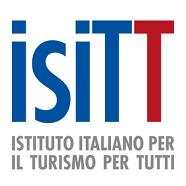
The itinerary proposed by Torino Tour for All (ToTo) is spatially limited to be entirely walked in about three and a half hours: it starts from the heart of the city (Piazza Castello) and returns there, developing through three independent sub-itineraries (The Quadrilatero, San Carlo and Via Po).
Quadrilatero Itinerary
The itinerary begins in the heart of the city, in Piazza Castello, where are the Palazzo Madama and Palazzo Reale, two palaces (both museums now-a-days) that have written the history of the nation.
Very near Piazza Castello there is Piazza San Giovanni and the Roman archaeological site. The Cathedral, San Giovanni Battista, is characterized by the white marble elegant façade and attached to it there is the hapel of the Holy Shroud, a Baroque masterpiece.
The surrounding area shows a layering of historical signs: from the Baroque decorations, to traces of the ancient Roman city, passing by medieval buildings.
The so-called Quadrilatero was once the castrum of the square-shaped Romans city, Augusta Taurinorum.
Via Garibaldi, a long pedestrian street, was both the decumanus maximus of the original Roman layout and the main medieval street. Today va Garibaldi is a commercial street, a vocation that goes back to the Duchy of Savoy expansion of the city to the west together with the restructuring of the urban core of older structure.
This itinerary ends in Piazza San Carlo.
Useful tools for Quadrilatero Itinerary
San Carlo Itinerary
San Carlo is considered the most beautiful square in Turin, a representative space for the city. In ancient times it was used to host military parades and a market, but now it preserves the appearance of the seventeenth century harmonious uniformity conferred by the royal architect Carlo Castellamonte.
The short side of the square, to the south-west towards the Porta Nuova station, is bounded by the facades of Santa Christina and San Carlo twin churches.
The itinerary continues in via Lagrange, via Accademia delle Scienze and Piazza Carignano.
The baroque building of the Accademia delle Scienze-Collegio dei Nobili houses the Museum of Egyptian Antiquities, one of the largest in the world.
Palazzo Carignano, a Baroque building, houses the National Museum of the Italian Risorgimento.
This second part of the itinery is under the arcades of Piazza Castello, the historic Caffè Baratti & Milano, opened in the bright nineteenth centurym and the Galleria Subalpina. A few steps from Galleria Subalpina there is the Caffè Mulassano, a small shop with extraordinary opulent decorations.
Useful tools for San Carlo Itinerary
Via Po Itinerary
Via Po is the axis of the second urban expansion, designed in the seventeenth century: it is considered one of the most beautiful roads in the city as it is wide, straight and regular.
The itinerary starts from Piazza Castello and leads to the nineteenth-century Piazza Vittorio Veneto and the Po river.
Via Po is characterized by an elegant uniformity: a row of beautiful building on an arcaded street.
Along Via Po there are the baroque churches of San Francesco da Paola and the Santissima Annunziata and many important buildings.
Piazza Vittorio Veneto, one of the largest in the world, is surrounded on three sides by arcaded buildings and the fourth side is open to the Po river and the hills surround the city.
From Piazza Castello, the panoramic view flows to the Po river and the hills and it is only interrupted by the Mole Antonelliana that emerges and dominates by its height.
The Mole Antonelliana, symbol of Turin, houses the National Museum of Cinema.
Useful tools for Via Po Itinerary
See also: